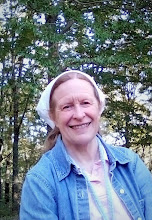Parents, this may be a bit of history you don't want your children knowing until they're older.
On October 31, 1828, Edinburgh, Scotland's infamous serial murderers William Burke and William Hare killed what Burke later confessed was their 16th person for profit. Another way of putting it is they created their 16th corpse, there being a market for corpses at the time, and they having found by chance that it was lucrative to provide fresh bodies to medical researchers.
Luckily for people prone to drinking in Edinburgh at that time (Burke and Hare had a penchant for drunks and 'daft' people), a couple of tenants at Hare's boarding house found the body and told police.
After his trial, Burke was hanged before a crowd estimated at between 25,000 and 30,000. Thousands viewed his corpse when it was put on public display. The authorities granted public access to the dissection of his body by the Royal College of Surgeons. (Does this fall under the saying, "What goes around comes around"?)
(Yuck.)
His skeleton was put on display and people have sold and exhibited items said to have been made from pieces of his skin. (I think this rates a Double Yuck.)
Hare was released in return for testimony against Burke. The physician who bought and bought and bought freshly dead human bodies without asking enough questions was cleared because there was no evidence of murder on individual corpses. (That would be a Dr. Robert Knox, if you're wondering.) To be a bit more specific, Professor Knox was officially cleared, for all the good it did him. The general public never forgave him.
Brendan O'Brien has more, at Scotsman.com. See also The Grave Robbing Business, or the Burke and Hare article at Edinburgh City Libraries, or William Burke & William Hare, 'The Resurrectionists'. (The last title refers to a snide nickname for grave-robbers.)
The case has long since passed into folklore. I don't know which details in these articles are true and which got added by active imaginations along the way. But as a friend who taught both English and folklore once told me, 'It's not what happened, but what people think happened that influences history.' And history it is, even if it comes down to us in odd and sorry ways; I understand that there are parents even now who threaten their youngsters with a visit from Burke and Hare if they don't behave.
See also the History of the College page at The Royal College of Surgeons at Edinburgh. It doesn't mention Burke and Hare, nor any other illicit corpse providers for that matter, but that it and other European universities mounted a major push to apply scientific method to medicine in the 1700s and 1800s did cause some unintended consequences. One of the few things I remember from a History of Medicine course in college was that a fair amount of grave-robbing and a few murders went along with early classes in anatomy, not to mention early clinical trials meant to amass data for analysis. You can't dissect bodies if you don't have bodies, after all. And if you've convinced yourself that science will conquer disease, and science needs data, and key data can only come from autopsies, well...
(There are reasons graveyards grew stout walls and individual burial plots sprouted pointy fencing back then. Not that Burke and Hare are accused of grave robbing, but they were catering to the same market as body snatchers.)
Side note: The Royal College of Surgeons at Edinburgh is celebrating 500 years this year. On a brighter note, I'd be very surprised if it still buys bodies under the cover of darkness, "no questions asked"...
Marge’s Diner by Gail Gibbons
-
Gail Gibbons has written and illustrated a multitude of nonfiction picture
books about everything from road building to quilting bees to spiders,
penguins,...
5 weeks ago

2 comments:
Marvelous post. I've linked.
Thanks.
Post a Comment